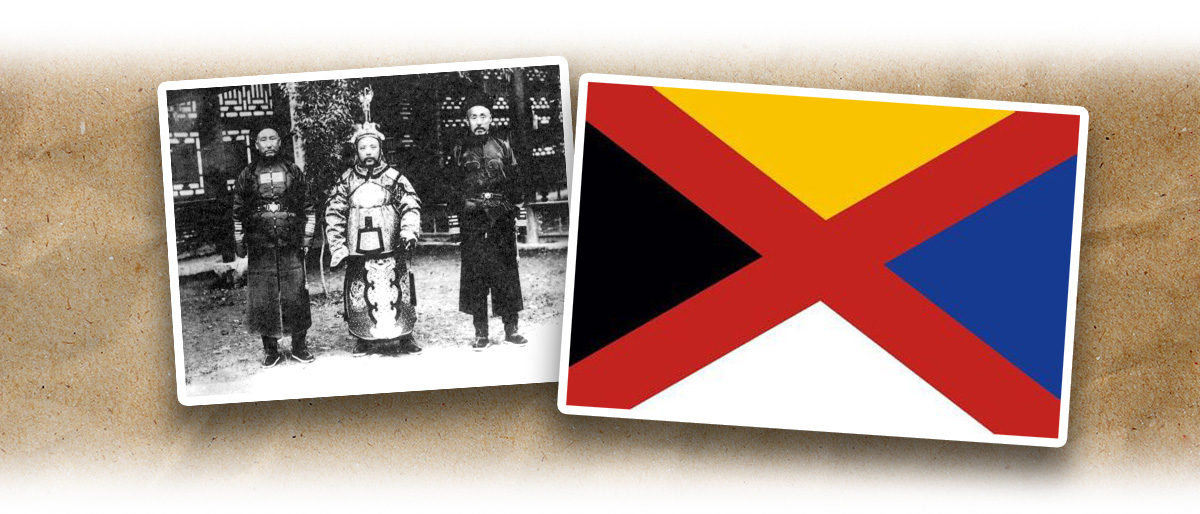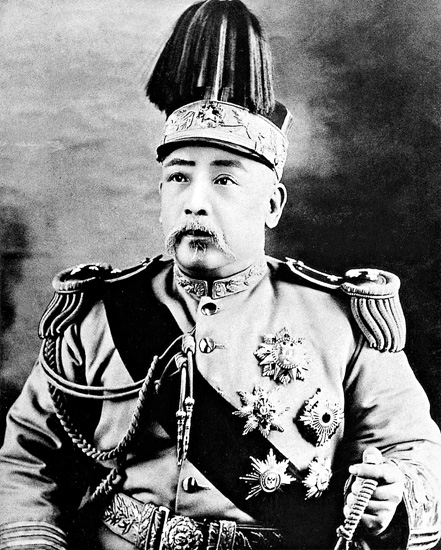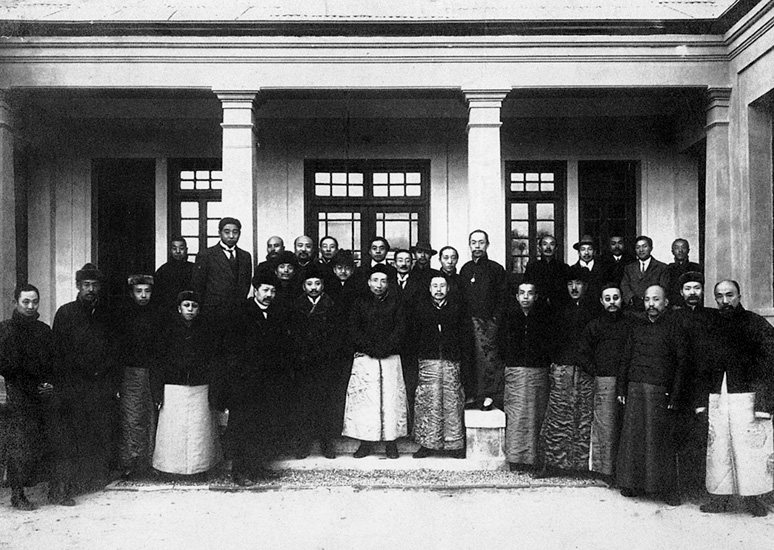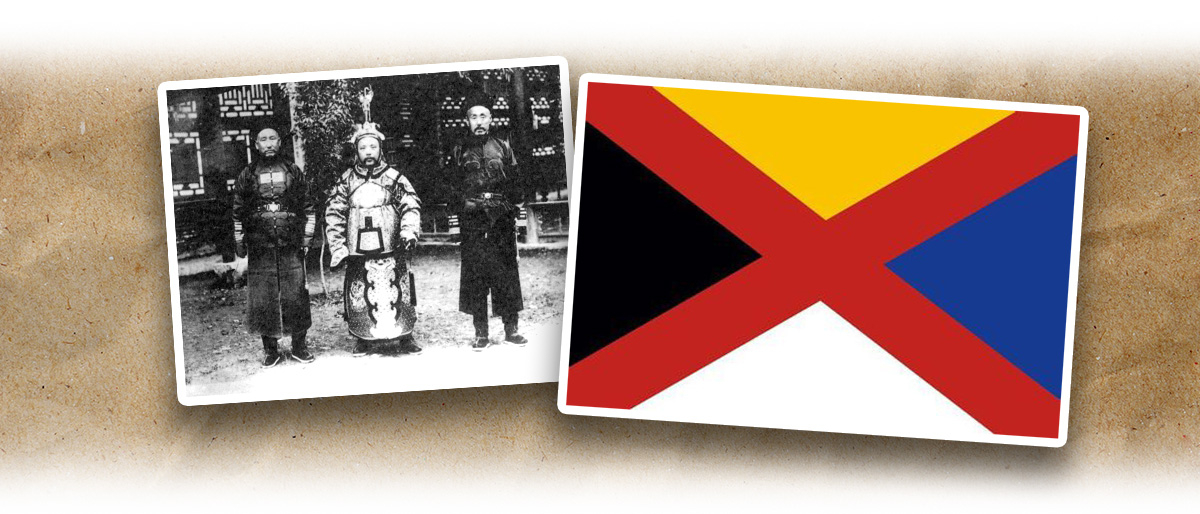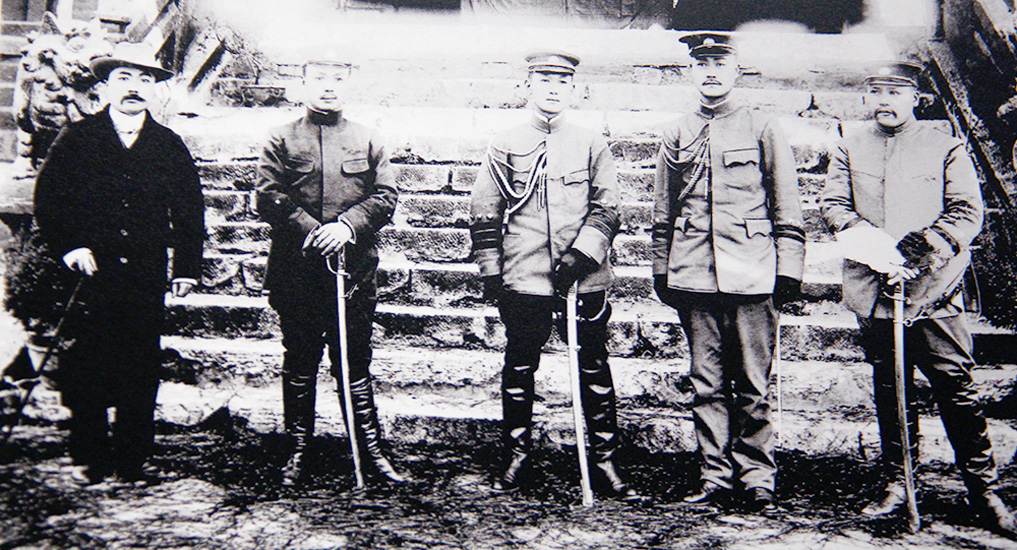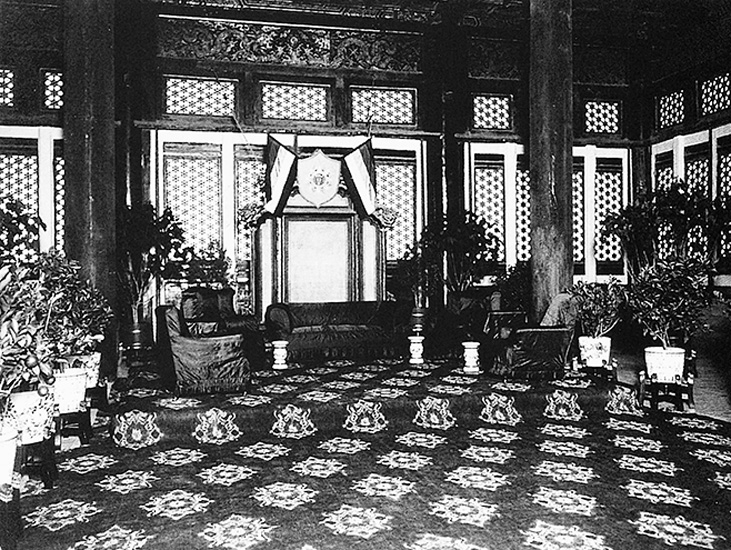After assuming office as the official President of the Republic of China in October 1913, Yuan Shikai (袁世凱) ordered the dissolution of Kuomintang (the Nationalist Party, 國民黨), the dominant party in the National Assembly, and the National Assembly successively. He then abolished the Provisional Constitution of the Republic of China (《臨時約法》), extending the president’s term of office to 10 years and making it renewable by re-election thereafter. This in effect made him president for life and China’s unofficial emperor. However, the unsatisfied Yuan had his mind set on becoming emperor.
In January 1915, Japan proposed the infamous “Twenty-One Demands”, requesting from China various concessions, which included controlling over Shandong Province (山東). Yuan accepted it in exchange for Japanese support. On 12 December 1915, Yuan accepted the “public opinion”, to rename the Republic of China the “Empire of China”, and assumed the throne as emperor in the following year. The year of 1916 was to be called “the first year of the Hongxian's (洪憲) reign” instead of “the fifth year of the Republic”. This act, seen as one that would undo China’s hard-won progress, was condemned by Sun Yat-sen (孫中山) and his fellow revolutionaries. The Sun-led Chinese Revolutionary Party issued a declaration of war against Yuan, setting the stage for the “Third Revolution” - so named in reference to the 1911 Xinhai Revolution (辛亥革命) and the Second Revolution (二次革命) that preceded it.
On 25 December 1915, Liang Qichao’s (梁啟超) student Cai E (蔡鍔) was the first to marshal his Yunnan (雲南) forces - or the “National Protection Army (護國軍)” - against Yuan. Other provinces soon followed suit. With Yuan’s unstable position, Japan and the other imperialist powers urged him to postpone his bid for monarchy. In a secret joint telegram, Yuan’s own trusted subordinates also demanded the giving up of his imperial ambitions to calm public anger. On 22 March 1916, Yuan was finally forced to declare the abolition of the Hongxian dynasty. Although Yuan tried to retain his post as president, the National Protection Army insisted that he had to step down. His Beiyang (北洋) generals also abandoned him. In June 1916, Yuan died amid national condemnation and betrayal. His death brought an end to the anti-Yuan campaign, which was later known as the “National Protection War (護國之役)”.
|
|
Yuan Shikai is a controversial figure in modern Chinese history. How should he be evaluated? |
|
|
See answer below. |
The official portrait of Yuan Shikai as the official President of the Republic of China. Setting on becoming emperor, Yuan further centralised his power after assuming office as president.
To pave his way to the throne, Yuan Shikai worked hard to sway domestic and foreign opinion to his cause. For example, he hired Frank Johnson Goodnow, an American, as his legal adviser and had him published a piece titled Monarchy or Republic? to make a case for monarchy in China. On 14 August 1915, a monarchist society named the Plan for Peace Association (Chou’anhui, 籌安會) was established. It soon gained Yuan’s trust for advocating the revival of monarchy and the implementation of constitutional monarchy. Pictured are the six core members of the association. From left to right: Yang Du (楊度, director), Sun Yuyun (孫毓筠), Yan Fu (嚴復), Liu Shipei (劉師培), Li Xiehe (李燮和), and Hu Ying (胡瑛).
Under the influence of the Plan for Peace Association, public opinion in favour of Yuan Shikai’s emperorship was formed. On 12 December 1915, Yuan announced his acceptance of “public opinion” and ascended the throne the following year. The Republic of China would be renamed the “Empire of China”, and Yuan’s regime would be known as the “Hongxian regime”, making 1916 the founding year of the “Hongxian Monarchy”. Pictured is a group photo of Yuan and the chief organisers of the accession ceremony.
Yuan Shikai became the emperor of the Empire of China in early 1916. On the left: Yuan in his imperial robes; on the right: the Empire of China’s national flag.
Cai E and his former residence in Beijing (北京). Amid the monarchist clamor, many people - Cai included - actually opposed Yuan Shikai’s imperial ambitions. With Liang Qichao’s help, Cai escaped Beijing in November 1915 and returned to Yunnan to make plans against Yuan.
Cai E became the Governor of Yunnan when the Republic of China was established. After the Second Revolution, Cai was ordered to stay in Beijing by Yuan Shikai and was placed under surveillance. Both Cai E and his teacher Liang Qichao opposed Yuan’s monarchist scheme. On 20 August 1915, Liang caused a stir after publishing a journal article titled What a Strange Idea on the So-Called State System! (《異哉所謂國體問題者》), in which he stated his opposition to the restoration of monarchy. In November that year, he helped Cai leave Beijing for Yunnan, which became the key to the later anti-Yuan movement.
On 25 December 1915, Cai E declared war on Yuan Shikai. His force was called the “National Protection Army”. Pictured is a group photo of Cai and some of the generals of the National Protection Army taken before they set out on their campaign. The third figure from the left is Cai, who commanded the First Army.
Under Cai E’s leadership, the National Protection Army held an oath of allegiance ceremony in Kunming (昆明), the capital city of Yunnan, before the anti-Yuan campaign. Yuan quickly deployed the Beiyang Army - which was more superior both in number and equipment - to quell the revolt in the south.
The National Protection Army’s encampment in the upper reaches of the Yangtze River (長江). The army won several battles against the vastly superior Beiyang Army in the first few months after the campaign started. A growing number of provinces joined the anti-Yuan movement.
An early Republican era photo of the Zhongnanhai (中南海) Presidential Palace in Beijing, where Yuan Shikai received foreign guests. Briefly renamed Xinhua Palace (新華宮) during Yuan’s reign as emperor, Zhongnanhai stood witness the failure of the Hongxian regime. Faced with growing opposition, not only did Yuan fail to receive international support for his monarchy, but also many of his Beiyang generals persuaded him to abandon it. On 22 March 1916, Yuan was forced to cancel the monarchy.
Yuan Shikai’s tomb in the early Republican era. Although Yuan had given up his imperial ambitions, he still tried to retain the position of president. However, by then he became hopelessly unpopular that even his other trusted Beiyang generals such as Feng Guozhang (馮國璋) and Duan Qirui (段祺瑞) urged him to resign. Beleaguered by the betrayal of his comrades and trusted ones, as well as the country’s internal and external difficulties, Yuan finally died of illness on 6 June 1916. With his death, the National Protection War also ended.
|
|
Yuan Shikai is a controversial figure in modern Chinese history. How should he be evaluated? |
|
|
Yuan Shikai was too often condemned by later generations for reviving monarchy via his Hongxian regime and was even called the “thief of the country”. However, one should make an objective assessment based on his or her words and deeds throughout life instead of just one single event. Yuan played an important role in the late Qing to early Republican period. In 1884, when a coup occurred in Qing China’s tributary state Korea, Japan sent troops to support the coup, with the intention of establishing a pro-Japan regime and cementing its control over Korea. On the Qing government’s orders, the 25-year-old Yuan led his army to uphold Qing China’s authority in Korea successfully by quashing the coup and defeating the Japanese troops. After the First Sino-Japanese War (甲午戰爭), Yuan’s work in training troops in Xiaozhan (小站), Tianjin (天津), helped form China’s first new army with Western training. Later, it grew into the Beiyang Army, China’s strongest army in the late Qing-early Republican era. Its formation was a major turning point during the military reform in China. After the invasion of the Eight-Nation Alliance, China had difficulty reclaiming Tianjin as the Boxer Protocol (《辛丑條約》) prohibited it from stationing troops there. This also gave foreign armies a pretext to station in Tianjin. As the then Governor of Zhili (直隸), Yuan quickly organised a Western-style police force - which was not considered as an army - to take over Tianjin and safeguarded Chinese sovereignty there. In addition, Yuan was an active participant of the 10-year-long Late Qing Reform (晚清新政) as well. His contributions included planning and building the Beijing-Zhangjiakou Railway (京張鐵路), the first railway designed and built by Chinese; promoting the development of industries, commerce, and postal service; supporting the abolition of the imperial examination; promoting the establishment of new schools; banning opium and gambling, and so on. These actions all helped innovate China. After the 1911 Xinhai Revolution , even illustrious revolutionary leaders such as Huang Xing (黃興) acknowledged the fact that Yuan was the most capable person for restoring order to the nation. They thus supported him to be the provisional president, and sought his aid in prompting the Qing emperor to abdicate. However, during the Hundred Days’ Reform (戊戌維新), Yuan betrayed the reformers’ plans to the Qing government and caused a coup that cut short the reform movement. During the Republican era, he accepted most of the terms in the humiliating “Twenty-One Demands” proposed by Japan. The biggest and unforgivable act was him undoing China’s hard-won political progress by reviving monarchy that stained his reputation. In any case, despite Yuan’s major failings, his significant contributions to China during the early modern era should not be overlooked. |
Sources of most photos used in this feature piece: Fotoe and misc. photo sources.




